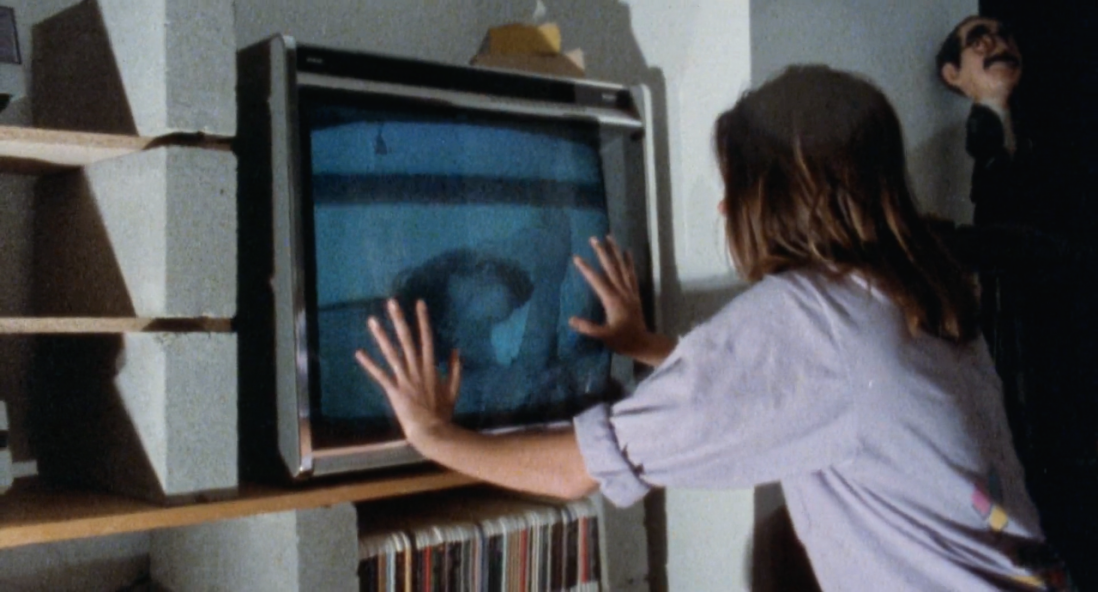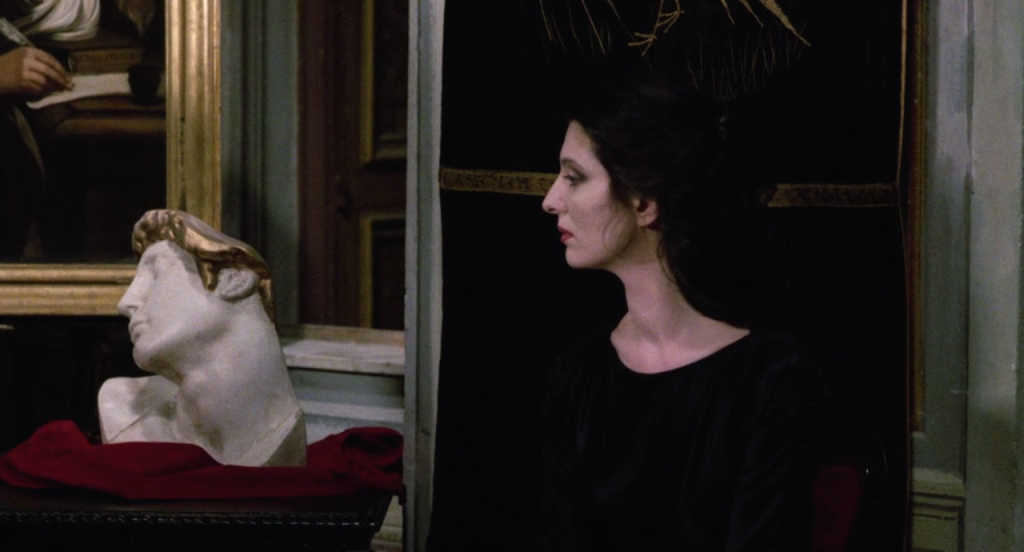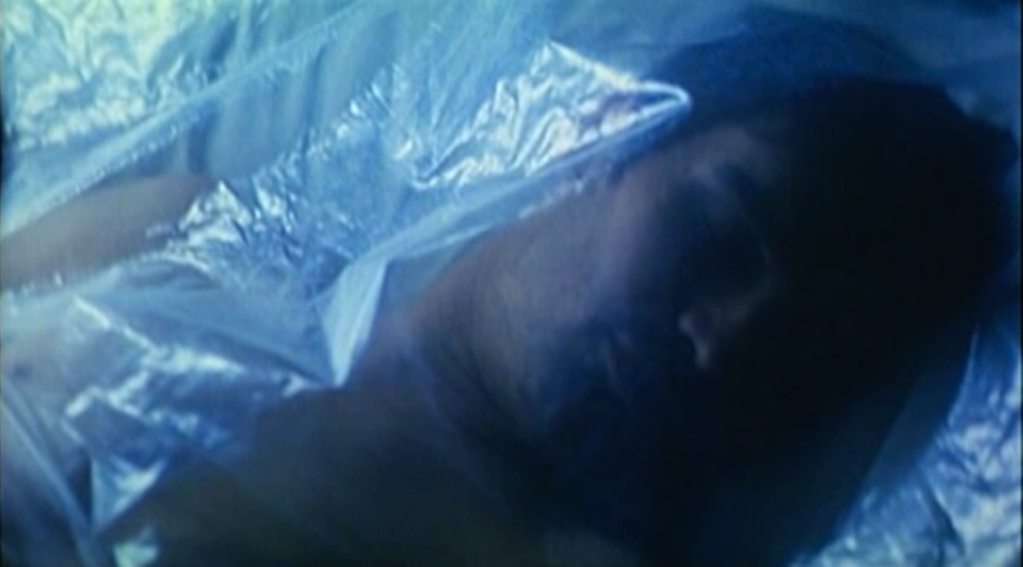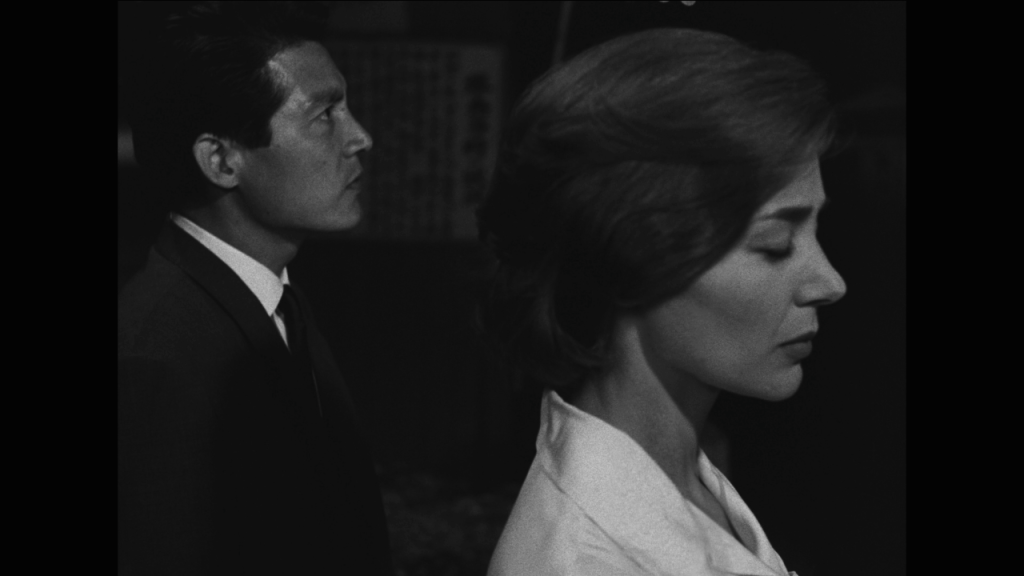
Disconnected (Gorman Bechard, 1984)
I’m surprised more enthusiasts of low-budget horror films don’t talk about this. I had never heard of it until this month. Alicia is a video rental clerk who is obsessed with movies, and who is receiving bizarre phone calls in the middle of the night. She begins dating a serial killer, and I’m not giving anything away by saying that since it’s established early on (in a pretty incredible reveal), nor am I giving anything away by saying that the sleeping-with-the-enemy plot eventually becomes an aside, because the film is ultimately more interested in Alicia’s character and possible madness. Years ago, I had this idea for a short film about a woman who never leaves her apartment and drives herself crazy by staying up all night every night watching the news, and there are stretches in this film that follow Alicia around her place -listening to the radio, staring at the tv, hallucinating, and so on- that almost perfectly render the kind of insular world I had in mind. This also worked for me in that Frances Raines is very likable as an actress and reminds me a little of Emma Cohen, who would also be right at home in a film like this. By the end there is a genuine sense of torment with Alicia that (thankfully) remains a mystery.
There is so much more though. Alicia has a promiscuous twin sister, also played by Raines. There are faux-documentaire segments where the chief of police is interviewed by *someone* in what could pass as footage from an Errol Morris true crime documentary. There is a recurring wailing noise that at first we’re meant to think is coming from the phone and made by whoever is calling Alicia, but it turns out that it may be an aural hallucination, and this sound gradually takes on a nightmarish quality. There’s also an amazing dream sequence that works perfectly because there are no visual or aural ‘clues’ within the film that let on that it’s a dream, and a Chris Marker-ish montage of black-and-white stills of Alicia stress-drinking and smoking. The film makes it no secret that it was shot in Waterbury, Connecticut (the video rental is in Naugatuck), and the soundtrack is comprised of new wave bands like XTC and Hunters and Gatherers (a vinyl copy of Talking Heads’ Speaking in Tongues has a cameo).

Etoile (Peter del Monte, 1989)
An atemporal haunted space, an unresolved ambiguity and mystery (always love a film that knows when to provide exposition and when to shut up and do its weird thing), a sense of space having a tangible effect on the people who enter it. The film even makes occasional references to one of my absolute favorite films Last Year at Marienbad -mostly with the scenes with the 1910s-1920s interiors of the Hotel Gellert in Budapest. This is very much a film about how a built environment does not just seem to represent a culmination of events -good or bad- that took place there (a literal hauntology of architecture), but also how those who enter those environments might be haunted by them -or at least gather a sense of a space being haunted- as well (there are similar scenes in Ruiz’s Love Torn in a Dream that take place in a church that connote the ‘rift’ between characters in the modern world those in the past). Even the dialogue channels something Duras or Robbe-Grillet would’ve written for Resnais (“I’ve been far…far away…now I’m back”). Many of the plot points are clumsy and some of the iconography is a little too on the nose (one character is an antique clock dealer), but I didn’t really care because despite all of that this film actually takes the notion of a ‘haunting’ seriously. In another sense, one could interpret the ‘ghost story’ strictly on the protagonist Claire’s terms in that there are choices we make -to pursue a career, a hobby, etc- and choices that others make for us. In that regard the film has a lot in common with Du Maurier’s Rebecca.

99.9 (Augusti Villaronga, 1997)
A woman investigating the death (or disappearance) of a former boyfriend discovers that he had been conducting experiments with video equipment to communicate with the dead (or something; it’s never quite explained, but that’s alright). Similar vibe to Hooper’s Poltergeist or Kurosawa’s Pulse, or Smolders’ La part de l’ombre: an antiworld that exists in a digital or photographic format. It’s nothing groundbreaking (and Kurosawa will do it better five years later with Pulse) but it’s fun to get caught up in an Anglophone-style procedural/mystery. In general I like stories about urbane people trying to navigate the eccentricities of rural life (without mocking either party), and/or pragmatic people having uncanny experiences. This has both in María Barranco, who I’ve only ever seen do comedy but here is a cool, smart lady from the city getting into misadventures in the middle of nowhere. It’s hardly perfect; I didn’t really like the reveal at the end, which seemed too simplistic given the intrigue and strangeness the film creates at first. The film also captures a lot of the ’90s cool’ look: the slightly-fogged surface appearance of film objects, expressionistic metallic blue lighting that was en vogue at the time, faces floating in total darkness lit by a single giant diffused light source. There was a glow to certain films from that decade that I honestly miss sometimes.

Sophia Antipolis (Virgil Vernier, 2018)
I love it when fiction comes close to resembling dreams I’ve had (I hate it when people use the term ‘dreamlike’ to describe not just films but anything, because it is diachronic -it assumes everyone dreams about the same things and in the same way, which they don’t). Watching Vernier’s films is comparable to watching the cognitive noise of a dream: there is a narrative -the title refers to a kind of shopping center/office park in Nice, the disappearance and perhaps the murder of a girl, impressions of various people who live and work there- but the narrative is almost an aside, like Ballard’s Running Wild or ‘phenomenological’ nouveau roman. Vernier shows you a diffuse landscape of tiny figures wandering through empty streets, contours and shadows of abandoned spaces, the occasional abject image that arrives and departs unceremoniously -all ‘connected’ in a strictly associative-synchronic (and not linear-diachronic) way, as the mind works.
RETOUR

Hiroshima, Mon Amour (Alain Resnais, 1959)
Screening at the Embassy of France in Washington DC. A treasure, obviously. There isn’t much left to say about this other than that Resnais’ films are clearly meant to be seen projected, if for no other reason than that you will notice so much more -the film adumbrates itself to you in a different way than on a computer screen (the difference between what you see when you walk to a destination versus taking a bus or driving). I’ve seen this maybe three or four times now, and in a cinema Georges Delerue’s score and Sacha Vierny’s photography make more ‘sense.’ The piano bits during the ‘flashbacks’ and the scene outside the first bar suggest a melancholy in remembering past events and foreclosing on future events (“We will likely die before we see each other again.”). The streets are always empty, the interiors are vast and have a clinical vibe, like the two are wandering around a giant airport. Physical space in the film is captured in such a way that bolsters the sense of remembering and forgetting when and where an event -a love affair, a war, etc- took place, like De Chirico’s Mystery and Melancholy of a Street come to life.